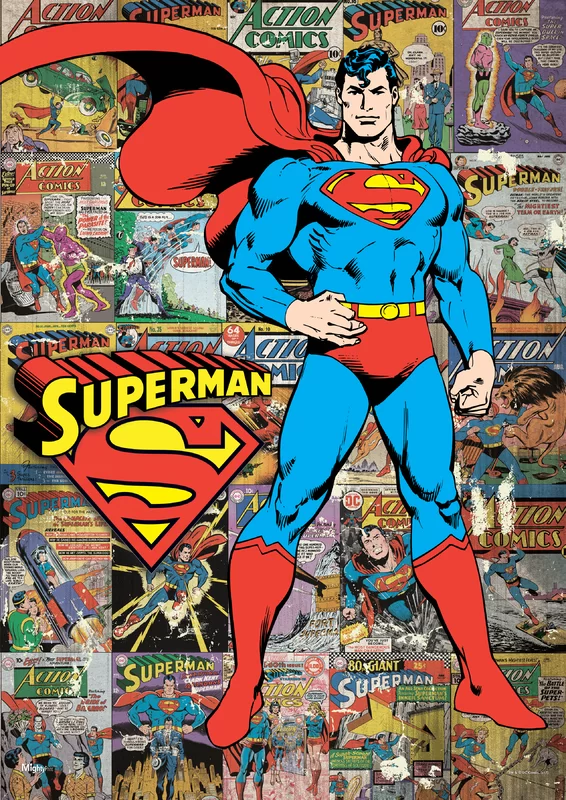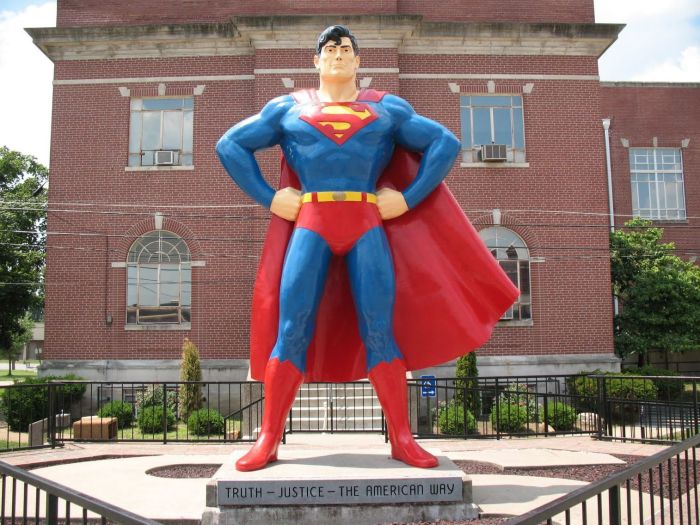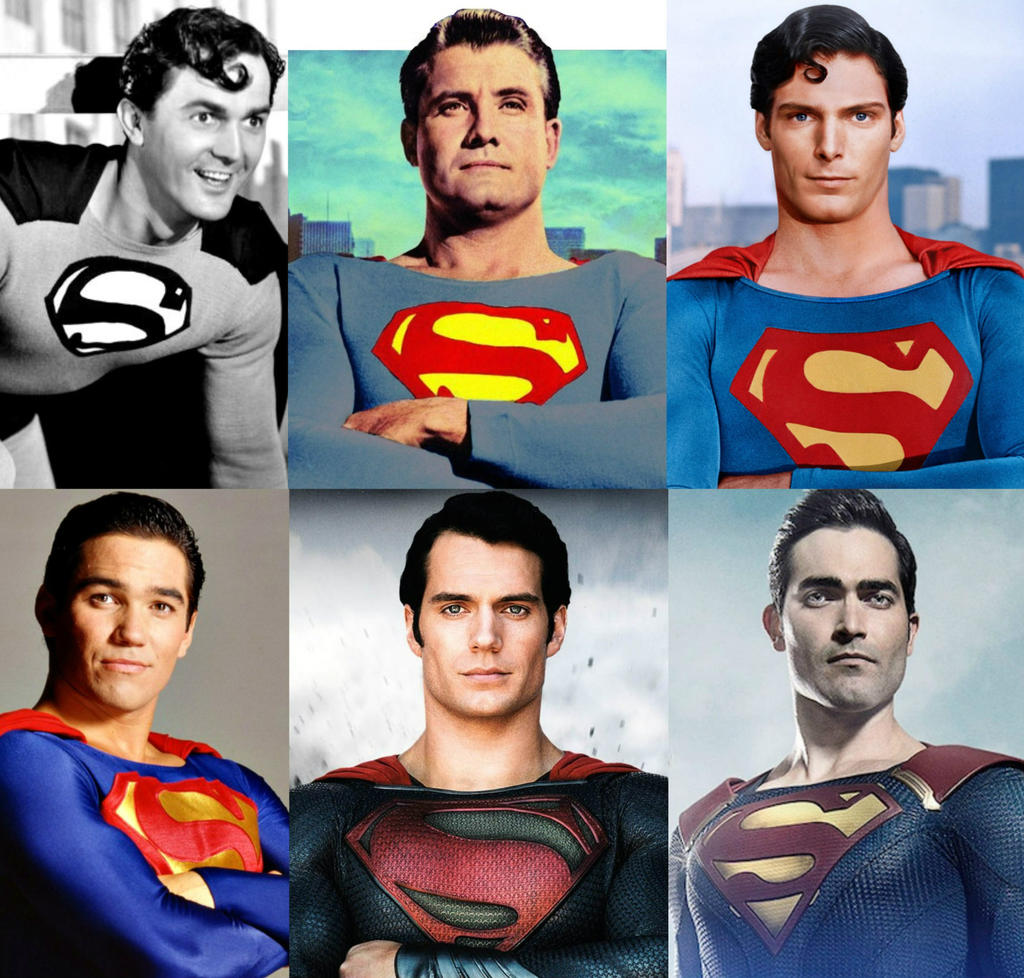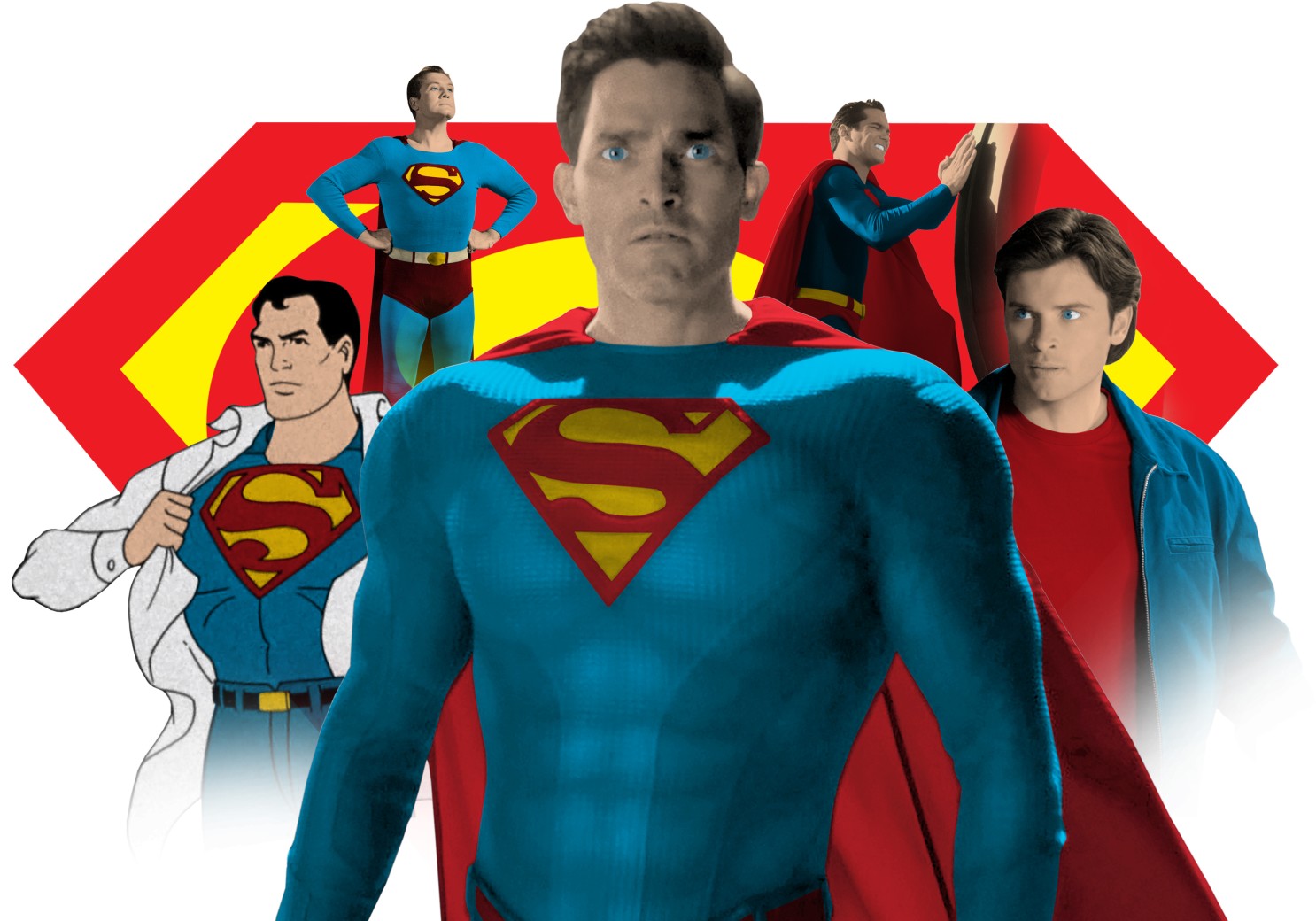
|
|
Metropolis, New York - Fictional City

The fictional city of Metropolis appears in comic books published by DC Comics, and is the home of Superman. Metropolis first appeared by name in Action Comics #16, in 1939.
The co-creator and original artist of Superman, Joe Shuster, modeled the Metropolis skyline after Toronto, Ontario, where he was born and lived until he was ten. Since then, however, it has become a fictional analogue of New York City.
Like many of DC's other fictional cities, the location of Metropolis has varied greatly over the years. Metropolis, however, is usually portrayed as a major city on the east coast of the United States.
It has been said that, metaphorically, Metropolis is New York during the day, and Gotham City (home to Batman) is New York at night; this comparison is usually attributed to Frank Miller and is helped by the fact that Batman's adventures are more often nocturnal than those of Superman-- hence the "bat" symbolism. (Gotham is an old nickname for New York City, popularized by Washington Irving.) Longtime Batman writer and editor Dennis O'Neil also said figuratively that Metropolis is New York above 14th Street on a warm spring day, and that Gotham City is New York below 14th Street on a cold, rainy autumn night.[citation needed] However, New York City does exist as a separate city from Metropolis and Gotham City within the comics; the Justice Society of America, for example, is based in New York.
Superman creator Joe Shuster grew up in Toronto and co-creator Jerry Siegel grew up in Ohio and worked in Cleveland. Originally intending to sell the Superman strips to a local newspaper, they set the stories there as well, and when the strips were re-used for the comicbooks, they changed the location to Metropolis. Action Comics #2, however, mistakenly portrays Clark Kent as a reporter for the Cleveland Evening News, although Metropolis is based on Toronto, Ontario (see Superman co-creator has humble Canadian roots).
In a 1970s edition of "Ask the Answer Man," a column that ran occasionally in DC publications, it was stated that Metropolis and Gotham City were adjacent to New York City, across the harbor from each other. That same column stated that Star City (the home of Green Arrow) was in Connecticut, Flash's Central City was in Ohio, and Hawkman's Midway City was in Michigan. However, in DC's fanzine, Amazing World of DC Comics, number 14 (March, 1977), Metropolis was clearly stated to be located in Delaware, while Gotham was placed in New Jersey. A role playing game DC Universe atlas guide published by Mayfair Games claimed that Metropolis was in the state of Delaware, which DC itself has also cited on occasion. See bottom of section.
The 2005 comic Countdown to Infinite Crisis places Metropolis in the state of New York. Were Metropolis to be on the coast of the state (without a change in boundaries), it would either take the place of New York City, or be on the rest of Long Island.
In Relation to Gotham City
Metropolis is frequently depicted as being within driving distance of Gotham City, home of Batman. Like Metropolis, Gotham's location has never been definitely established; however, it is usually treated as also being a major east coast city. The distance between the two cities has varied greatly over the years, ranging from being hundreds of miles apart to Gotham and Metropolis being twin cities on opposite sides of a large bay. In the Seven Soldiers of Victory series Klarion the Witch Boy, New York City is called the "Cinderella City", referring to nearby Metropolis and Gotham as its "ugly step-sisters." The film Superman Returns mentions Gotham City, as does Batman in an episode of the Justice League TV series. in Superman: The Animated Series, Clark Kent's mother Martha Kent refers to Batman as "that nut in Gotham City".
The differences between Metropolis and Gotham City are almost as diverse as the differences between their respected superheroes. In contrast to the dark, gritty, and raw way Gotham City has been portrayed, Metropolis has almost always been depicted as a clean, warm, and a wealthy city.
In Relation to Smallville
In the pre-Crisis on Infinite Earths comics, Smallville was often shown as being within driving distance of Metropolis, though with no definitive location. Since John Byrne's revamp of Superman in 1986, however, its location has usually been cited as being in Kansas.
In the Smallville television series, Metropolis seems to be located in Kansas or in a neighboring state. In an interview, the creators of Smallville have stated that Metropolis is approximately 100 miles (160 kilometers) from Smallville. In one episode, a letter is shown with the address "Metropolis, KA," suggesting the city is located in Kansas; however, the United States postal abbreviation for Kansas is "KS", not "KA." In another episode ("Fallout"), a map is shown with "Metropolis, KS" clearly labeled; it's in the southwest quadrant of Kansas, somewhere near the real-world location of Dodge City, while Smallville on the same map (marked with a star) appears to be a couple hundred miles to the east, near real-world Wichita. The zip code for Metropolis, Kansas is given at different times as 66632 or 66624. Another possibility for Metropolis is Kansas City, which sits on the Kansas/Missouri border.
In filming the series, Vancouver stands in for Metropolis.
note: In a direct contradiction in the Superman storyline--it has been said that Smallville fits in with the movie series storyline, however, in Smallville, Metropolis is in Kansas, and in the movies, it's on the east coast.
In Film & Television
In 1978's Superman: The Movie and its sequels, Metropolis is shown as being in (or taking the place of) New York, including depicting such New York landmarks as the Statue of Liberty and the World Trade Center. In Superman III, some Calgary, Alberta landmarks can be seen, including the Calgary Tower.
In the 1990s television series Lois and Clark: The New Adventures of Superman, Chicago landmarks such as the John Hancock Center, the Tribune Tower and the Wrigley Building are easily identifiable. However, several repeated references, especially early in the first season, state that Metropolis is located in the same general area as New York City. Later seasons place it in the fictional New Troy State.[citation needed]
In 2006's Superman Returns, director Bryan Singer intended his version of Metropolis to be a stylistic cross between 1930's New York and current New York.[citation needed] The many shots of Superman flying high above the city establish that although Metropolis has a rectangular park reminiscent of Central Park, the city overall has a slightly different shape from New York [citation needed]. (Several New York City landmarks, such as Battery Park, the Woolworth Tower, and the Brooklyn Bridge, appear in the movie, as does the street grid of lower Manhattan, with a fictional bridge inserted north of Battery Park City and a fictional pier in the middle of Battery Park. The map of Metropolis shown in this article, however, tries to make the city's form as different as possible from New York City's, given the scenery shown.) Photographs of some automobiles used in filming show license plates bearing the phrase "New York State" along the bottom[2], although the featured vehicles (incliding Lois Lane's car) are shown in the film to have license plates reading "THE FIRST STATE" Lex Luthor's map onscreen portrays the city as directly in the location of New York City. Senior production designer Guy Dyas said in The Art of Superman Returns (Chronicle Books, 2006): "We wiped out, I think, half of New Jersey to put in Metropolis."
History
The founding of Metropolis mimics that of New York City in the way that Swedish settlers bought it as a bargain from some natives on New Troy Island. The island was exchanged for a few trinkets.
The 2000 issue "Superman: Y2K" details much of the history of Lex Luthor's family, which is bound up closely with Metropolis. In this issue, Metropolis is shown to have been founded by Pilgrims. One of Luthor's ancestors was in the colony--and another was a Native American chieftain who was poised to wipe out the colonists before they could get settled. Before the attack, however, the colony erupted in fire (presumably, a meteor crashed and/or exploded over the settlement, setting most of the buildings ablaze. "Chief Luthor" and his tribe took pity on the colonists and offered the hands of friendship.
In the late 1800s, again mirroring New York City, Metropolis is shown to have been the scene of intense ethnic riots. Still later, on the even of WWI, Lex Luthor's grandfather (or great-grandfather) is shown to own large steel mills in the city. Metropolis, like most of the major cities in the U.S., was not spared the ravages of the Great Depression. Some of the more impovrished areas of the city, such as Suicide Slum, still bear the legacy of that time.
Around 2000, the city was given a futuristic makeover by the time-traveling Brainiac 13, a villainous descendant of Superman foe Brainiac. The transformation of Metropolis was covered in greater depth by the 2003 miniseries Superman: Metropolis. The city has since reverted to its former state.
Legion-Era Metropolis
Metropolis is traditionally depicted as continuing to survive, thrive and expand well into the 30th and 31st Century timeframes used as the backdrop of the Legion of Super-Heroes in all that series' varied incarnations to date.
During the original incarnation of the series, Metropolis would be depicted as covering anything ranging from the entire Atlantic American coast to a more narrowed jurisdiction -- according to one map officially published during Paul Levitz and Keith Giffen's initial partnership on the series -- covering most of Massachusetts, all of Rhode Island and Connecticut, New York State from Long Island's eastern tip up into the Catskills, and a large portion of northern New Jersey. In one imaginary Superman tale set in the future, Metropolis is the megalopolis of the Eastern seaboard corridor, having literally merged the cities of Washington, DC, New York and Boston and all the territory in between.
Whatever version was used, it was generally viewed as given that the original city, as well as Gotham City, were considered within Legion-era Metropolis' boundaries, from the mid-1960's until the events of Zero Hour.
The post-Infinite Crisis version of the series as published in the "three-boot" edition has described Metropolis as having expanded over the intervening millennium up the "entire Atlantic seaboard" of North America in one issue (reminiscent of New York's future expansion in Asimov's The Caves of Steel and in Poul Anderson's The Corridors of Time). Further corroboration has yet to be undertaken.
Features
Over the years, Metropolis' features have greatly changed in the comics; however, Metropolis is always presented as being a world class city on the same caliber as New York City, Los Angeles or Chicago. It is often referred to as The Big Apricot just as New York City is nicknamed as The Big Apple.
The first map of Metropolis designed for Mayfair Games' first edition of the DC Heroes Role-Playing Game resembled that of the city of Montreal.
Metropolis' features became more defined (and more obviously based on New York) following both 1985's Crisis on Infinite Earths miniseries and John Byrne's subsequent revamping of Superman, including the late 1980s comic special The World of Metropolis.
Districts & Burroughs
Similar to New York City, Metropolis is made up of six boroughs, the largest being New Troy. Each of the boroughs has its own distinct character and feel though all resemble and mimic some part of New York.
New Troy
New Troy is the largest burrough in Metropolis. Resembling Manhattan, New Troy is a skyscraper island bustling with commerce and business. The concrete and steel canyons of the city rise to dizzying heights. "1930's architecture stretched like a rubber band" as said in the Art of Superman Returns book.
The Daily Planet Building is the most recognizable landmark in the Metropolis skyline. Located in "Planet Square," it is particularly known for the Daily Planet globe atop the building. Other prominent skyscrapers include the Emperor Building (a reference to the Empire State Building), the Newstime Building (home of the national Newstime magazine, an obvious reference to Newsweek and Time) which is secretly owned for several years by Lord Satanus posing as "Colin Thornton", and LexCorp Tower, headquarters for Lex Luthor's company.
Besides the Financial District, notable areas of New Troy include Chinatown, Little Bohemia (the arts capital of Metropolis), and Glenmorgan Square (one of a number of New Troy's counterparts to New York's Times Square).
Famous streets in New Troy include Fifth Avenue, Bessolo Boulevard, and Topaz Lane. The latter two are Metropolis' versions of Broadway in New York City. Bessolo Boulevard's name is derived from Adventures of Superman lead actor George Reeves' middle name. Other Metropolis boulevards in the New Troy borough are similarly named for other actors from that series and from its radio predecessor of the same name(e.g.: Coates, Larson, Collyer, etc.).
Lex Luthor stands before the Superman and Superboy memorials in Centennial Park.Centennial Park (sometimes labeled as Metropolis Park) is Metropolis' largest city park. Based on New York's Central Park, its most noteworthy feature is a statue of Superman, erected after his death fighting Doomsday. A statue of Superboy Conner Kent was built next to it after the events of Infinite Crisis.
Other notable places (and their NYC inspirations) include Wireless City Movie Theater (Radio City Music Hall), the Halldorf Hotel (Waldorf Astoria), Lacey's Department Store (Macy's), Stacey's Department Store, and Spiffany's Jewelry Store (Tiffany's).
In northwestern New Troy is the impoverished and crime-infested neighborhood of Suicide Slum, best known for the 1940s adventures of the Guardian and his street urchin companions, the Newsboy Legion. Although the northwestern location is similar to the relationship of Harlem to midtown Manhattan, the neighborhood bears more physical and cultural resemblance to Manhattan's Lower East Side. The Ace o' Clubs is a bar owned by Bibbo Bibbowski in Suicide Slum.
The now-married Clark Kent and Lois Lane currently live in an apartment in New Troy, at 1938 Sullivan Lane (a tribute to the year Superman first appeared); Clark Kent's traditional apartment address of 344 Clinton St., Apt. #3B, was usually described as being located in midtown Metropolis.
Other Burroughs & Suburbs
New Troy is separated from the suburban boroughs by the West River and Hobb's River. Midvale is a suburb of Metropolis, more well-known as the home of Supergirl and the site of the Midvale Orphanage. Bakerline is another borough of Metropolis. Located north of New Troy, Bakerline is the home of newspaper reporter Jimmy Olsen.
Other boroughs and suburban areas include Queensland Park, Hell's Gate, St. Martin's Island, Park Ridge, Metrodale, and Highville.




